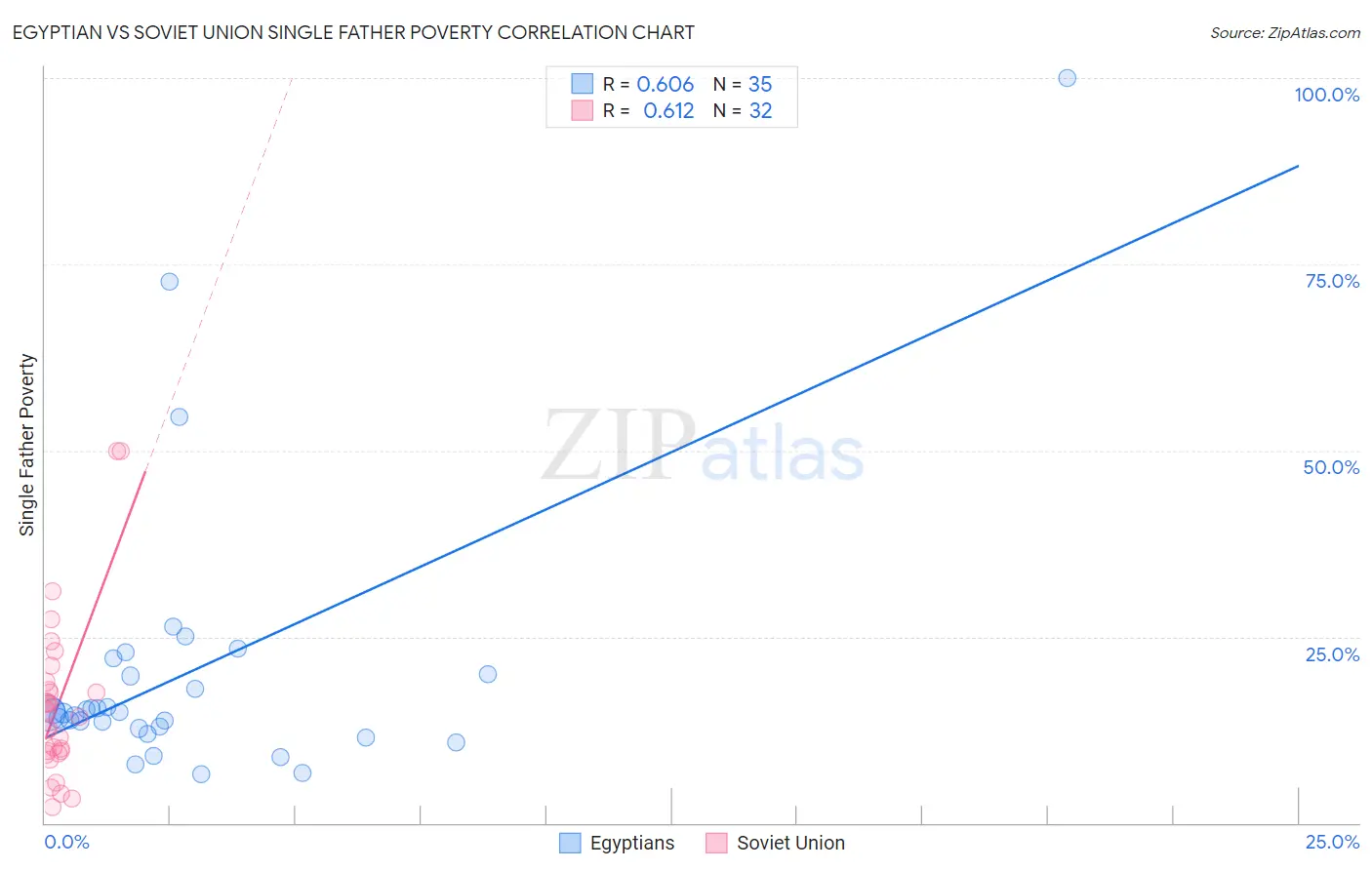Egyptian vs Soviet Union Single Father Poverty
COMPARE
Egyptian
Soviet Union
Single Father Poverty
Single Father Poverty Comparison
Egyptians
Soviet Union
14.7%
SINGLE FATHER POVERTY
100.0/ 100
METRIC RATING
34th/ 347
METRIC RANK
14.3%
SINGLE FATHER POVERTY
100.0/ 100
METRIC RATING
18th/ 347
METRIC RANK
Egyptian vs Soviet Union Single Father Poverty Correlation Chart
The statistical analysis conducted on geographies consisting of 226,846,927 people shows a significant positive correlation between the proportion of Egyptians and poverty level among single fathers in the United States with a correlation coefficient (R) of 0.606 and weighted average of 14.7%. Similarly, the statistical analysis conducted on geographies consisting of 41,440,473 people shows a significant positive correlation between the proportion of Soviet Union and poverty level among single fathers in the United States with a correlation coefficient (R) of 0.612 and weighted average of 14.3%, a difference of 2.8%.

Single Father Poverty Correlation Summary
| Measurement | Egyptian | Soviet Union |
| Minimum | 6.6% | 2.1% |
| Maximum | 100.0% | 50.0% |
| Range | 93.4% | 47.9% |
| Mean | 20.2% | 16.1% |
| Median | 14.8% | 14.6% |
| Interquartile 25% (IQ1) | 12.7% | 9.5% |
| Interquartile 75% (IQ3) | 20.0% | 18.4% |
| Interquartile Range (IQR) | 7.3% | 8.9% |
| Standard Deviation (Sample) | 18.7% | 11.2% |
| Standard Deviation (Population) | 18.5% | 11.1% |
Demographics Similar to Egyptians and Soviet Union by Single Father Poverty
In terms of single father poverty, the demographic groups most similar to Egyptians are Immigrants from Bolivia (14.7%, a difference of 0.070%), Okinawan (14.6%, a difference of 0.10%), Immigrants from Indonesia (14.7%, a difference of 0.24%), Asian (14.6%, a difference of 0.66%), and Icelander (14.5%, a difference of 0.81%). Similarly, the demographic groups most similar to Soviet Union are Immigrants from Hong Kong (14.2%, a difference of 0.030%), Immigrants from Iraq (14.3%, a difference of 0.040%), Immigrants from Singapore (14.3%, a difference of 0.090%), Immigrants from Afghanistan (14.3%, a difference of 0.18%), and Immigrants from Iran (14.2%, a difference of 0.48%).
| Demographics | Rating | Rank | Single Father Poverty |
| Immigrants | Iran | 100.0 /100 | #16 | Exceptional 14.2% |
| Immigrants | Hong Kong | 100.0 /100 | #17 | Exceptional 14.2% |
| Soviet Union | 100.0 /100 | #18 | Exceptional 14.3% |
| Immigrants | Iraq | 100.0 /100 | #19 | Exceptional 14.3% |
| Immigrants | Singapore | 100.0 /100 | #20 | Exceptional 14.3% |
| Immigrants | Afghanistan | 100.0 /100 | #21 | Exceptional 14.3% |
| Taiwanese | 100.0 /100 | #22 | Exceptional 14.3% |
| Immigrants | Egypt | 100.0 /100 | #23 | Exceptional 14.4% |
| Immigrants | South Eastern Asia | 100.0 /100 | #24 | Exceptional 14.4% |
| Iranians | 100.0 /100 | #25 | Exceptional 14.4% |
| Spanish American Indians | 100.0 /100 | #26 | Exceptional 14.4% |
| Nepalese | 100.0 /100 | #27 | Exceptional 14.4% |
| Immigrants | South Central Asia | 100.0 /100 | #28 | Exceptional 14.5% |
| Somalis | 100.0 /100 | #29 | Exceptional 14.5% |
| Thais | 100.0 /100 | #30 | Exceptional 14.5% |
| Icelanders | 100.0 /100 | #31 | Exceptional 14.5% |
| Asians | 100.0 /100 | #32 | Exceptional 14.6% |
| Okinawans | 100.0 /100 | #33 | Exceptional 14.6% |
| Egyptians | 100.0 /100 | #34 | Exceptional 14.7% |
| Immigrants | Bolivia | 100.0 /100 | #35 | Exceptional 14.7% |
| Immigrants | Indonesia | 100.0 /100 | #36 | Exceptional 14.7% |